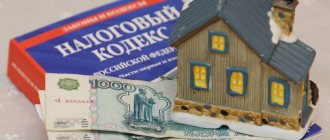How to find out what is included in the living space of a private house, and how it can be calculated
- Area of premises. This is a calculation of the size of the room, determined by the distance between the walls without taking into account the baseboards. If a stove or fireplace is installed in a private house, its dimensions are excluded from the area of the premises during calculations.
- The total area of the building is the total area of all residential and non-residential premises, which includes rooms, kitchen, vestibule, corridors, hallway and built-in closets. Previously, when calculating the total area, verandas, terraces and outdoor areas, balconies and loggias were taken into account, but now this rule has ceased to apply.
- Living area is the total size of living rooms; in documents they are taken into account as rooms intended for permanent residence of people. These are the kitchen, living room, bedroom, children's room, study, and this concept also includes dressing rooms.
- Usable area (in foreign standards it is designated as “used”). This is the total area of all premises; the area of stairs and staircases, as well as elevator shafts and ramps is excluded from this value.
The living area must be indicated in advertisements when selling, since this parameter allows you to estimate the actual size of the living space. So in a large house a spacious hallway or vestibule can be equipped, but the rooms themselves will be small and cramped. The decision must be made not only after evaluating the documents, but also after a visual inspection of the house.
Tax on a house with an attic
When building, buying and renting a house, you should take into account that the cost per square meter of an attic is less than the cost of living space in a two-story house. Consequently, the tax rate for attic premises is much lower compared to second floor premises. When calculating the tax, the attic is taken into account only if the distance from the attic floor to the lowest point of the ceiling is at least 2 m. If this distance is less than 2 meters, then the attic is not taken into account for tax purposes. Calculating tax on a house with an attic
, the area of the attic is conditionally assumed to be equal to 50% of the area established in accordance with Part 2 of this article. Thus, to reduce property taxes, it is more profitable to build a one-story house with a low attic.
Let's look at an example of calculating tax on a house with an attic
. Technical inventory authorities estimate the cost of a house in accordance with special collections, and then multiply the resulting value by a coefficient established for each region. According to the information contained in these collections, the estimated cost of 1 m³ of a one-story brick house with an attic is 24.5 rubles. To simplify the calculations, let’s take the area of a one-story house to be 100 m², and the height of the first floor to be 2.5 m. The cubic capacity of the attic floor is calculated individually. In any case, the volume of the attic will be less than the volume of the first floor. Let the total volume of the house with the attic be 450 m³. Thus, the inventory value of the house will be equal to:
Interesting: Characteristics from the place of work in the traffic police sample
Property tax based on inventory value
This procedure is used if in your region local authorities have not decided on the procedure for calculating tax based on cadastral value. To determine the amount of property tax for individuals you need:
- Find out the inventory value of all your real estate, which is subject to tax.
- Find out the property tax rate when calculating it based on the inventory value, which is valid in the region where the property is located.
- Calculate the tax amount using a simple algorithm.
How to find out the inventory value of property
Almost nothing. The inventory value is determined by the Technical Inventory Bureau (BTI) of your region. You can send a written request to the BTI for a specific object. They are required to respond to your request and indicate the inventory value of the object.
How to find out the tax rate and calculate the tax
The tax rate depends on the total inventory value of all real estate objects that are registered with you in the corresponding region. That is, to determine the rate you need to add up the cost of all objects. The higher the inventory value, the higher the rate. Section 406 of the Tax Code provides only basic tax rates. The specific rate is determined by local authorities.
The Tax Code establishes the following rates:
| Tax rate | Total inventory value of taxable objects |
| Up to 0.1 percent inclusive | Up to 300,000 rubles inclusive |
| Over 0.1 to 0.3 percent inclusive | Over 300,000 to 500,000 rubles inclusive |
| Over 0.3 to 2.0 percent inclusive | Over 500,000 rubles |
If rates are not determined by local law, then the tax is calculated at a rate of 0.1 percent in relation to objects with a total inventory value multiplied by a deflator coefficient up to 500,000 rubles inclusive, and at a tax rate of 0.3 percent in relation to other objects.
The authorities in your region may divide real estate into types and set different rates for them. For example, the total inventory value of residential buildings, apartments and rooms should be taxed at one rate, and garages, parking spaces, unfinished buildings and non-residential premises at another rate. In this case, the tax for each type of property is calculated separately at its “own” rate. To find out whether there is such a division or not, you need to read the law of the region in which the property is located.
Attention! When determining the tax rate, the data for all your objects is summarized. Including those for which benefits are provided and on which you do not pay tax. The law does not provide that they should be excluded from the calculation.
To calculate the tax amount for the year, the inventory value of each object is multiplied by the tax rate. The cost of the property for which you are using benefits is not included in the calculation.
Example: A pensioner owns 2 apartments in the same region. The first with an inventory value of 290,000 rubles, the second - 260,000 rubles. For the first apartment, the pensioner enjoys a discount and does not pay tax. He pays tax on the cost of the second apartment in the general manner. He also owns 2 garages. Their inventory value is 42,000 and 35,000 rubles. The pensioner also does not pay tax on the first garage.
In the region where the apartments are located, tax rates are established for the total inventory value:
— up to 500,000 rub. - 0.1 percent; — over 500,000 rub. - 0.3 percent.
There is no division of real estate by type when calculating taxes in the region.
The total inventory value of real estate is: 290,000 + 260,000 + 42,000 + 35,000 = 627,000 rubles.
For all objects the tax rate is 0.3 percent. It is used when calculating tax on the second apartment and second garage.
The annual tax amount will be:
— for an apartment: 260,000 rubles. x 0.3% = 780 rub.
— for the garage: 35,000 rubles. x 0.3% = 105 rub.
How to - calculate, clarify - or reduce the area of the house
When it comes to regular payments, many property owners consider it advisable to clarify: is the area of the house indicated in their documents correctly? Is there any error? In addition, some are looking for a way to reduce this amount one way or another in order to save on taxes. We will consider all the identified issues by contacting a specialist.
But it should be remembered that it is possible to exclude any areas from the total area of a residential premises, without carrying out work on the reconstruction of this house, if previously this area was mistakenly included in the area of a balcony, loggia, veranda or terrace, or areas premises not intended to satisfy citizens' household and other needs related to their residence in residential premises, for example, the area of a garage, experts note.
The house tax is calculated based on the total area or living area
In order not to be unfounded, I turned to the provisions of Article 401 of the Tax Code of the Russian Federation, which specifies real estate objects that are subject to taxation and nothing is said there that there are differences between residential and non-residential premises; for the same example, a garage is taxed, but it is not at all does not apply to residential premises.
Thus, according to Russian legislation, property tax for individuals is calculated based on the cadastral value of the property. And when calculating the cadastral value, absolutely all components of real estate are taken into account - the total area, auxiliary buildings and premises.
Calculate total area
The design of individual houses is carried out in accordance with SP 55.13330.2011 “SINGLE APARTMENT RESIDENTIAL HOUSES”. According to SP 55.13330.2011, clause 4.7, the Rules for calculating the area of premises, determining the volume and number of floors of a building and the number of floors are adopted according to SP 54.13330 “Residential multi-apartment buildings”. Let's look there. Appendix B (mandatory) paragraph B.1.1 The area of a residential building should be determined as the sum of the areas of the floors of the building, measured within the internal surfaces of the external walls. The floor area includes the area of balconies, loggias, terraces and verandas, as well as landings and steps, taking into account their area at the level of a given floor.
B.2.1 The area of apartments is determined as the sum of the areas of all heated premises (living rooms and auxiliary premises intended to meet household and other needs) without taking into account unheated premises (loggias, balconies, verandas, terraces, cold storage rooms and vestibules). The area occupied by a stove and (or) fireplace, which are part of the heating system of the building (and are not decorative), is not included in the area of the apartment premises. The area under the flight of an internal staircase in an area with a height from the floor to the bottom of the protruding staircase structures is 1.6 m or less is not included in the area of the room in which the staircase is located. When determining the area of rooms or premises located in the attic floor, it is recommended to apply a reduction factor of 0.7 for the area of parts of the room with a ceiling height of 1.6 m - at ceiling angles of up to 45°, and for the area of parts of the room with a ceiling height of 1.6 m. 9 m – from 45° or more. The areas of parts of the room with a height of less than 1.6 m and 1.9 m at the corresponding ceiling angles are not taken into account. A room height of less than 2.5 m is allowed for no more than 50% of the area of this room. B.2.2 The total area of the apartment is the sum of the areas of its heated rooms and premises, built-in closets, as well as unheated rooms, calculated with reduction factors established by the rules of technical inventory.
Interesting: How to find out if a car has been re-registered to a new owner
Calculating house taxes using a calculator
For RBC Real Estate, realtors previously calculated that the updated tax would have a greater impact on owners of luxury real estate. Owners of an apartment with an area of 206 square meters, for example, on the Ostozhenka metro station, will have to pay more than 170 thousand rubles, taking into account the tax deduction. in year.
- residential premises and houses;
- objects of unfinished construction if a residential building is the intended purpose of these objects;
- real estate complexes, if they include at least one similar premises, namely a residential building;
- garages and parking spaces equipped for housing.
What is included in the tax calculation calculator for a private home: tax deductions in the amount of 20 sq. m for houses, 10 sq. m for rooms in houses and 50 sq. m for individual housing construction objects.
Calculation of property tax. General procedure
To calculate the tax, simply multiply the value of the property by the tax rate. But the problem is that in different regions the value of real estate is determined differently. There are two options:
- the cadastral value is taken into account (it is close to the market price);
- the inventory value is taken into account (it is significantly lower than the market price).
The cadastral value is taken if local authorities have adopted a law that provides for tax calculation based on it. If there is no such law, then the tax is paid according to the inventory value. For a list of regions in which tax calculation based on cadastral value has been introduced, see the link.
Thus, the tax amount is calculated using the formula:
| Real estate value (cadastral or inventory) | X | Tax rate | = | Tax amount per year |
Garden house tax: studying the new tax code
- Heroes of the Soviet Union.
- Heroes of the Russian Federation.
- Disabled people (childhood, 1st and 2nd disability groups).
- Participants in the Civil and Great Patriotic Wars, and equivalent combat veterans.
- Liquidators of the accident at the Chernobyl nuclear power plant.
- Military personnel and military pensioners with more than 20 years of service.
- Family members of fallen servicemen.
- Pensioners, as well as people who have reached retirement age (55 years for women and 60 years for men).
- When calculating based on cadastral value, the tax rate for individuals cannot exceed 0.3%. Therefore, if the value of the property is 2 million per year, you will have to pay 2,000,000 x 0.003 = 6,000 rubles.
- But when calculating by inventory value, the maximum rate can reach 2%, which for the same two million rubles will already give 2,000,000 x 0.02 = 40,000 rubles.
How to calculate house and land tax?
Owners of private houses are required to pay 2 taxes at once: property and land . These are unrelated types of duties; each has its own payment procedure and different rates.
What data is needed
Any tax is calculated based on several parameters:
- Object of taxation.
- Tax base.
- Rates.
Land tax
When calculating land tax, these parameters will look like this:
- The object is the site itself.
- The tax base is the cadastral value of the property.
- The rate is no more than 0.3 or 1.5% (depending on the type of site and its territorial location) (Article 394 of the Tax Code of the Russian Federation).
Land tax is calculated based on the cadastral value of the plot (Article 390 of the Tax Code of the Russian Federation). It is fixed at the beginning of the year for which payment is made.
The state cadastral authority determines the specific price of the object independently. You can obtain this data from Rosreestr, including online (via the organization’s website).
To calculate the total amount to pay the duty, use the formula:
N = Kst x D x St x Kv , where
- N – tax.
- Cst – cadastral value.
- St – rate.
- Kv – ownership coefficient (for plots owned for less than 1 calendar year).
If the plot has several owners at once (it is in common shared ownership), the tax is calculated in proportion to the share of each owner. If the property is joint, the duty is calculated in equal shares.
Rates
Land tax applies to local taxes. That is, the money received from taxpayers is sent to the budget of the municipality in which the site is located. The rates for payment of duty are also determined by local authorities.
At the same time, the Tax Code establishes that their size cannot exceed:
- 0.3% for plots:
- located on agricultural lands;
- intended for personal subsidiary farming, gardening, truck farming, livestock farming, as well as summer cottage farming;
- occupied by apartment buildings;
- provided to ensure defense, security and customs needs;
- 1.5% – for all other types.
- The object of taxation is a residential building (including buildings located on land plots with a designated purpose - for running a subsidiary, country house, gardening or vegetable gardening) (Clause 2 of Article 401 of the Tax Code of the Russian Federation).
- Tax base – cadastral value of the object (or inventory value for regions that have not switched to the new tax calculation system) (clause 2 of Article 402 of the Tax Code of the Russian Federation).
- Rate – from 0 to 2% (depending on the type of object and region).
Local authorities are empowered to set their own level of fees. Rates can be differentiated depending on the categories of land and the type of permitted use of the land plot.
Privileges
When calculating tax, benefits may apply. They are divided into:
Federal benefits completely exempt indigenous peoples of different territories of the Russian Federation from paying taxes if their land plots are used to preserve cultural traditions.
Local benefits are determined by each municipality independently. You can find out what exemptions are used in a particular region on the Federal Tax Service website.
Residential house tax
The duty relates to property taxes . It applies to both residential and non-residential real estate. The following data is used for calculations:
The tax is calculated using the formula:
N = (Kst – Nv) x St x Pkf , where
- N – tax.
- Nb – tax deduction.
- Cst – cadastral value.
- St – rate.
- Pkf – reduction factor (set for the transition period from the calculation system based on inventory value to cadastral value, ranges from 0.2 to 0.6 depending on the region).
Rates
Property tax also falls into the category of local and its rates are established by municipal authorities (Article 406 of the Tax Code of the Russian Federation). As in the case of land tax, the Tax Code sets values for property duties that local authorities cannot exceed.
For residential buildings, the base rates when calculating based on cadastral value are:
- 0.1% – with the possibility of reducing them to 0 or increasing them by no more than 3 times (up to 0.3%) at the discretion of local authorities;
- 2% – for objects worth more than 300 million rubles.
When calculating based on inventory value, the main rates are:
- with a real estate price of up to 300 thousand rubles. – up to 0.1%;
- from 300 to 500 thousand rubles. – from 0.1% to 0.3%;
- more than 500 thousand rubles. – from 0.3% to 2.0%.
Privileges
Home owners can qualify for 2 types of benefits:
The following persons are eligible for federal benefits:
- Heroes of Russia and the Soviet Union, participants of the Second World War.
- Disabled people of 1st or 2nd group, disabled children.
- Persons and citizens affected by the Chernobyl disaster who participated in the liquidation of nuclear accidents.
- Certain categories of military personnel discharged from military service and members of their families.
- Old-age pensioners and citizens who have reached the ages of 60 and 65 for women and men.
Another number of benefits depends on the type of property. Preferential categories include:
- residential and commercial buildings with an area of up to 50 square meters. m., located on plots of gardening and dacha non-profit associations of citizens (clause 15, clause 1, article 407 of the Tax Code of the Russian Federation).
House tax
In reality, pensioners are beneficiaries. And they have special rights in tax obligations. House taxes are no exception. What can every pensioner count on? He is entitled to complete exemption from property tax. Moreover, regardless of your health or social status. In Russia, all people who have reached retirement age are completely exempt from paying this penalty. And it doesn’t matter where exactly a person lives. The main thing is that he lives on the territory of the Russian Federation. It follows from this that, as already noted, the payers of the payment under study are only able-bodied adult citizens. Children and pensioners do not pay this tax in any way. Every citizen should take this fact into account.
Interesting: Do you need your spouse’s consent to buy an apartment in 2020?
It all depends on the financial capabilities of municipalities. In the Moscow region, for example, the search operation has already been widely deployed; a large number of not just mansions, but huge properties with courts, swimming pools and saunas, have been found, the owners of which hide the fact of the existence of the property.
What taxes must the owner of a private home pay annually and how much? Thank you!
It is established independently by region, but the boundaries are specified in federal law.
Law of the Russian Federation of December 9, 1991 N 2003-I
“On taxes on property of individuals”
(as amended December 22, 1992, August 11, 1994, January 27, 1995, July 17, 1999, July 24, 2002, August 22, 2004)
» Article 1. Taxpayers
1. Payers of taxes on property of individuals (hereinafter referred to as taxes) are recognized as individuals - owners of property recognized as an object of taxation.
2. If property recognized as an object of taxation is in the common shared ownership of several individuals, each of these individuals is recognized as a taxpayer in relation to this property in proportion to its share in this property. Taxpayers are determined in a similar manner if such property is in the common shared ownership of individuals and enterprises (organizations).
3. If the property recognized as the object of taxation is in the common joint ownership of several individuals, they bear equal responsibility for the fulfillment of the tax obligation. In this case, the taxpayer may be one of these persons, determined by agreement between them.
Article 2. Objects of taxation
The following types of property are recognized as objects of taxation:
1) residential buildings, apartments, dachas, garages and other buildings, premises and structures;
Article 3. Tax rates
1. Tax rates for buildings, premises and structures are established by regulatory legal acts of representative bodies of local government, depending on the total inventory value. Representative bodies of local self-government can determine the differentiation of rates within established limits depending on the total inventory value, type of use and other criteria. Tax rates are set within the following limits:
+——————————————+—————————-+
| Property value | Tax rate |
+——————————————+—————————-+
| Up to 300 thousand rubles | Up to 0.1 percent |
| From 300 thousand rubles to 500 thousand rubles | From 0.1 to 0.3 percent |
| Over 500 thousand rubles | From 0.3 to 2.0 percent |
+——————————————+—————————-+
3. Taxes are credited to the local budget at the location (registration) of the taxable object.
Article 4. Tax benefits
1. The following categories of citizens are exempt from paying taxes on property of individuals:
Heroes of the Soviet Union and Heroes of the Russian Federation, as well as persons awarded the Order of Glory of three degrees;
disabled people of groups I and II, disabled since childhood;
participants in the Civil and Great Patriotic Wars, other military operations to defend the USSR from among military personnel who served in military units, headquarters and institutions that were part of the active army, and former partisans;
civilian personnel of the Soviet Army, Navy, internal affairs and state security bodies holding regular positions in military units, headquarters and institutions that were part of the active army during the Great Patriotic War, or persons who were in cities during this period, participation in the defense of which these persons are counted towards their length of service for the purpose of granting a pension on preferential terms established for military personnel of active army units;
persons receiving benefits in accordance with the Law of the RSFSR "On the social protection of citizens exposed to radiation as a result of the disaster at the Chernobyl nuclear power plant", as well as persons specified in articles 2, 3, 5, 6 of the Law of the Russian Federation "On the social protection of citizens exposed to radiation" radiation due to the accident in 1957 at the Mayak production association and the discharge of radioactive waste into the Techa River”;
military personnel, as well as citizens discharged from military service upon reaching the age limit for military service, health conditions, or in connection with organizational and staffing events with a total duration of military service of 20 years or more;
persons who were directly involved as part of special risk units in testing nuclear and thermonuclear weapons, eliminating accidents of nuclear installations at weapons and military facilities;
family members of military personnel who have lost their breadwinner. Benefits for family members of military personnel who have lost their breadwinner are provided on the basis of a pension certificate, which is stamped “widow (widower, mother, father) of a deceased soldier” or has a corresponding entry certified by the signature of the head of the institution that issued the pension certificate and the seal of this institution. If these family members are not pensioners, the benefit is provided to them on the basis of a certificate of death of a serviceman.
2. Tax on buildings, premises and structures is not paid:
pensioners receiving pensions assigned in the manner established by the pension legislation of the Russian Federation;
citizens discharged from military service or called up for military training, performing international duty in Afghanistan and other countries in which hostilities took place. The benefit is provided on the basis of a certificate of entitlement to benefits and a certificate issued by the district military commissariat, military unit, military educational institution, enterprise, institution or organization of the Ministry of Internal Affairs of the USSR or the relevant bodies of the Russian Federation;
parents and spouses of military personnel and government employees who died in the line of duty. The benefit is provided on the basis of a certificate of death of a military personnel or civil servant issued by the relevant government bodies. Spouses of civil servants who died in the line of duty are granted benefits only if they do not remarry;
from specially equipped structures, buildings, premises (including housing) owned by cultural figures, artists and folk craftsmen and used exclusively as creative workshops, ateliers, studios, as well as from living space used to organize non-state museums open to the public , galleries, libraries and other cultural organizations, for the period of such use;
from residential buildings with a living area of up to 50 square meters and outbuildings and structures with a total area of up to 50 square meters located on plots in gardening and dacha non-profit associations of citizens.
4. Local government bodies have the right to establish tax benefits for taxes established by this Law, and the grounds for their use by taxpayers.
Article 5. Procedure for calculating and paying taxes
1. Taxes are calculated by the tax authorities.
Persons entitled to the benefits specified in Article 4 of this Law shall independently submit the necessary documents to the tax authorities.
2. The tax on buildings, premises and structures is calculated on the basis of data on their inventory value as of January 1 of each year.
For buildings, premises and structures that are in the common shared ownership of several owners, the tax is paid by each of the owners in proportion to their share in these buildings, premises and structures.
For buildings, premises and structures that are in common joint ownership of several owners without determining shares, the tax is paid by one of the indicated owners by agreement between them. In case of inconsistency, the tax is paid by each owner in equal shares.”
How to calculate the area of a house calculation formula
Using the already known formula, we will obtain an indicator of the area of one of the walls. In the same way, we will calculate the area of all external walls of a residential building. After this, you need to add up all the obtained values and the result will be the area of the external walls of your house.
- When designing future housing.
- When carrying out direct construction work for the correct calculation of consumables.
- For finishing work.
- When registering home ownership with the justice authorities.
- To obtain the BTI technical plan.
- When renovating the interior.
- When registering the purchase and sale of housing.
- When renting out housing.
Private house tax
Private houses are most often defined as country houses, at least if they are located outside the urban area. And while this fact may affect the amount of tax, it does not affect the payment procedure. The first and main point for correctly determining a plan of action is establishing the circle of subjects. They are the ones who are required to contact the tax service and pay the annually considered tax option. Not every citizen who touches country houses, apartments, or buildings on a plot of land, even if he is the person who built it or left it unfinished, will pay tax.
When calculating, you should pay attention to the possibility of receiving benefits. For example, no matter how many people live in a house, only the area that exceeds 50 square meters will be taxed. That is, when a house has an area of 100 m2, then the tax will be charged only for half. A house with a smaller area is not subject to taxes. Other benefits for certain categories of persons, tax deductions and even complete exemption from tax obligations are also possible.
In a year, the tax on houses and dachas could increase 125 times
“It is for this reason that our company was chosen to carry out the assessment work. The BTI archive stores information about about 10 million capital construction projects in the Moscow region. The technical passport, which is in the BTI archives, contains much more information than the State Property Committee. With the help of archives, we supplement the information of the State Property Committee, determine the percentage of wear in order to make the most transparent and honest assessment.
— But in order to use the services of the MFC, you must first register your property, put it on the cadastre, clarify the boundaries of the site, register the house, and “link” it to the site. A lot of fuss. Probably half of the property owners in the Moscow region have not done any of this. And for some - the whole thing.
22 Jul 2020 glavurist 4751
Share this post
- Related Posts
- How many meters per person are allowed 2020
- Cost of Hot Water Per Cube According to the Meter in 2020 in Perm
- How to Buy a House with Maternity Capital
- Housing and communal services tariffs in Moscow from July 1, 2020 for the population according to the meter
Tax calculation and payment
The Tax Code of the Russian Federation stipulates that any transactions on real estate that is a dacha building are carried out in accordance with the established procedure, which concerns the usual procedures for the purchase or sale of real estate of the usual type (apartments and residential buildings).
This means that the taxpayer is obliged to pay the state at least 13% of the value of the land plot or dacha building under the relevant agreement. This rule applies to Russian citizens. In the event that the seller is not a resident of the country or has not lived in it for a long time (more than a year), 30% of the transaction must be provided for payment.
Preferential categories
The innovations also affected preferential categories, which include some groups of citizens who are exempt from tax when selling country houses.
It should be remembered that previously the period of continuous ownership, allowing you not to pay the state, was three years. Now, the owner of the property will receive financial relief only if he remains a continuous owner for five years.
The following categories of citizens are exempt from paying tax without taking into account the mentioned five-year period:
- individuals who received a dacha building or a plot of land as a gift from one of their relatives or an official spouse;
- citizens of the country who received a taxable object through privatization;
- individuals who received a dacha building or a plot of land in the process of fulfilling a lifelong maintenance agreement with dependents.
The mentioned benefits come into force after the expiration of a specific period of three years.
In all other cases, in which the period of ownership of real estate does not expire, sellers are required to pay the appropriate percentage when concluding a contract for the sale and purchase of a country building or land plot.
Until 2020, it was possible to reduce the amount of interest by taking advantage of the opportunities provided by the formula for calculating the tax required to be paid. Currently, any financial benefits are provided only by the state, subject to compliance with the requirements of benefit groups. Other options are not provided and are considered illegal.
Conditions for pensioners
Pensioners have their own conditions, which are provided for by current legislation. Federal law does not provide any financial benefits to pensioners.
For this reason, they, like other categories of citizens, are required to pay tax on a country house, unless otherwise provided by the preferential categories to which they may belong.
But since this type of tax has regional conditions, in some areas pensioners are deprived of the need to make payments based on the standards established by local governments.








